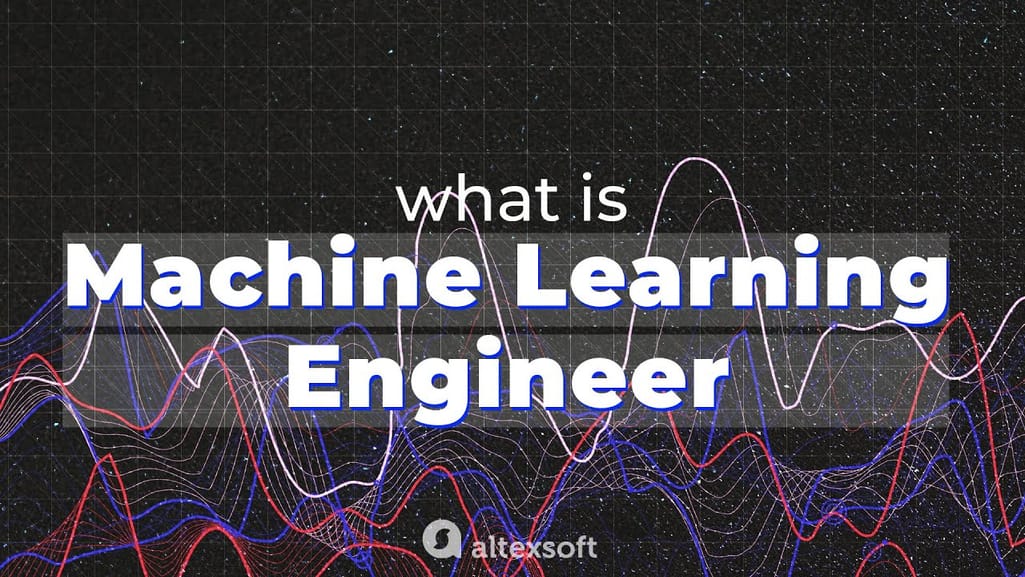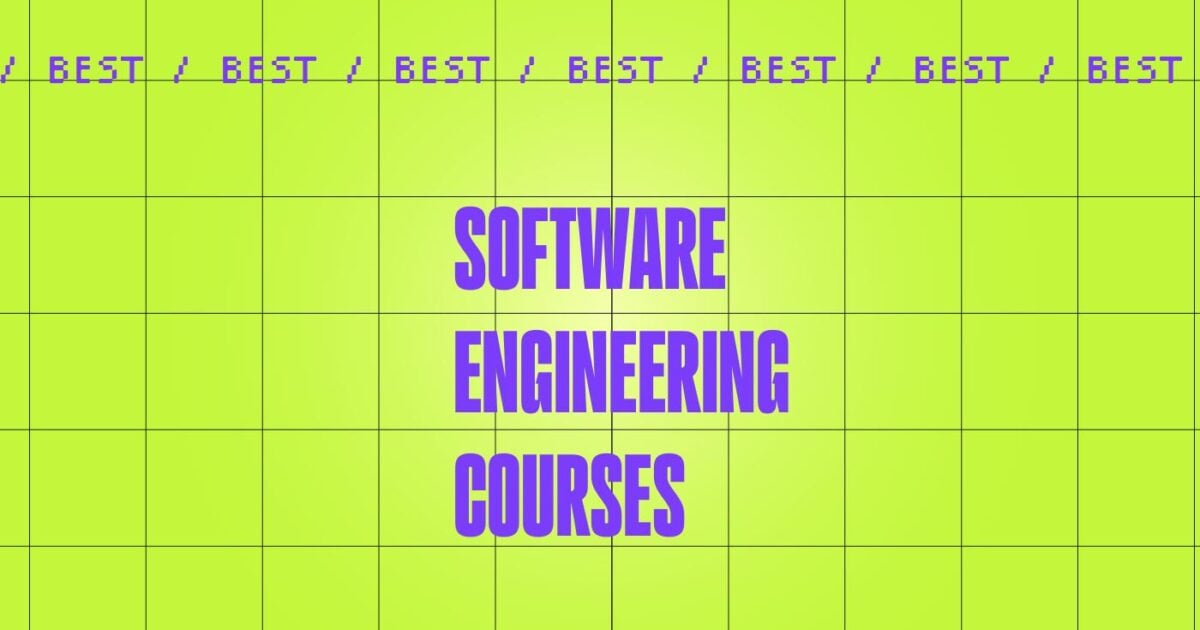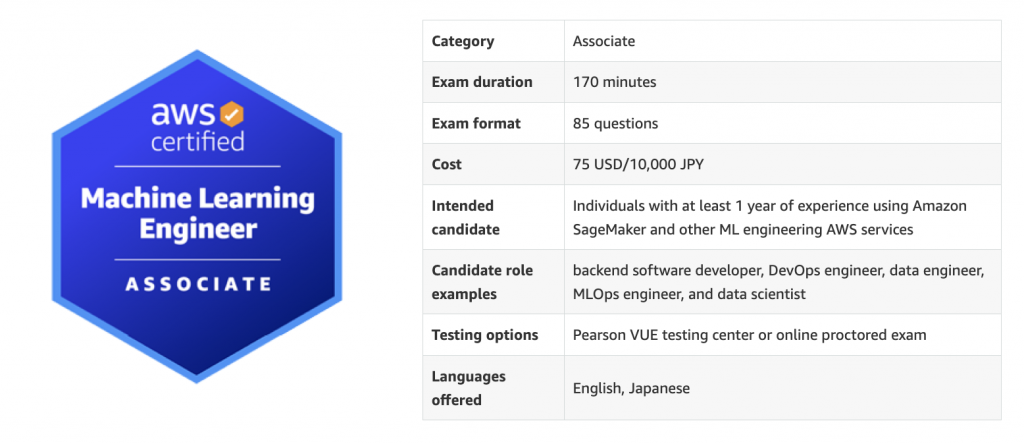All Categories
Featured
Table of Contents
- – Examine This Report about Should I Learn Data ...
- – How 6 Steps To Become A Machine Learning Engin...
- – Leverage Machine Learning For Software Develo...
- – The Greatest Guide To How To Become A Machine...
- – The Only Guide to How I’d Learn Machine Lear...
- – The 4-Minute Rule for Machine Learning Engin...
- – The Single Strategy To Use For Aws Certified...
Some individuals think that that's dishonesty. Well, that's my entire job. If somebody else did it, I'm mosting likely to utilize what that person did. The lesson is putting that aside. I'm requiring myself to believe with the feasible solutions. It's more concerning eating the material and attempting to use those concepts and less regarding locating a collection that does the work or searching for someone else that coded it.
Dig a little deeper in the math at the start, just so I can develop that foundation. Santiago: Lastly, lesson number 7. This is a quote. It claims "You need to comprehend every information of an algorithm if you intend to use it." And after that I claim, "I assume this is bullshit guidance." I do not think that you have to understand the nuts and bolts of every formula before you utilize it.
I would certainly have to go and examine back to actually obtain a far better intuition. That does not indicate that I can not fix points making use of neural networks? It goes back to our sorting instance I assume that's just bullshit recommendations.
As an engineer, I've serviced several, numerous systems and I've made use of many, numerous points that I do not comprehend the nuts and screws of how it works, despite the fact that I comprehend the impact that they have. That's the last lesson on that particular thread. Alexey: The funny point is when I think of all these collections like Scikit-Learn the algorithms they make use of inside to execute, for instance, logistic regression or something else, are not the same as the algorithms we examine in artificial intelligence classes.
Examine This Report about Should I Learn Data Science As A Software Engineer?
Even if we tried to discover to get all these fundamentals of equipment learning, at the end, the algorithms that these libraries make use of are various. ? (30:22) Santiago: Yeah, absolutely. I believe we require a great deal more materialism in the market. Make a great deal more of an effect. Or concentrating on delivering worth and a little bit less of purism.

Incidentally, there are two different paths. I generally speak with those that wish to work in the market that intend to have their effect there. There is a course for scientists and that is entirely different. I do not attempt to talk about that because I don't recognize.
However right there outside, in the industry, materialism goes a lengthy means without a doubt. (32:13) Alexey: We had a comment that claimed "Really feels even more like motivational speech than talking regarding transitioning." So possibly we need to switch. (32:40) Santiago: There you go, yeah. (32:48) Alexey: It is a good motivational speech.
How 6 Steps To Become A Machine Learning Engineer can Save You Time, Stress, and Money.
One of the points I wanted to ask you. First, allow's cover a couple of points. Alexey: Allow's begin with core devices and frameworks that you require to learn to really shift.
I recognize Java. I recognize SQL. I understand just how to use Git. I understand Bash. Maybe I know Docker. All these points. And I become aware of machine learning, it feels like a cool thing. What are the core tools and frameworks? Yes, I viewed this video clip and I obtain persuaded that I do not need to obtain deep right into mathematics.
What are the core devices and frameworks that I need to discover to do this? (33:10) Santiago: Yeah, absolutely. Terrific question. I think, top, you should start finding out a little bit of Python. Given that you already understand Java, I don't think it's going to be a big shift for you.
Not since Python coincides as Java, however in a week, you're gon na obtain a lot of the differences there. You're gon na have the ability to make some progression. That's top. (33:47) Santiago: After that you get certain core devices that are going to be used throughout your whole job.
Leverage Machine Learning For Software Development - Gap - The Facts
You obtain SciKit Learn for the collection of maker learning formulas. Those are devices that you're going to have to be utilizing. I do not suggest just going and discovering concerning them out of the blue.
We can talk concerning details training courses later. Take one of those courses that are going to start introducing you to some issues and to some core ideas of artificial intelligence. Santiago: There is a course in Kaggle which is an introduction. I do not keep in mind the name, but if you go to Kaggle, they have tutorials there absolutely free.
What's excellent concerning it is that the only need for you is to understand Python. They're mosting likely to provide an issue and tell you exactly how to utilize choice trees to fix that certain trouble. I assume that process is extremely powerful, due to the fact that you go from no maker finding out background, to understanding what the problem is and why you can not solve it with what you know now, which is straight software application design methods.
The Greatest Guide To How To Become A Machine Learning Engineer
On the other hand, ML engineers focus on building and deploying artificial intelligence designs. They concentrate on training designs with information to make predictions or automate tasks. While there is overlap, AI designers deal with more diverse AI applications, while ML designers have a narrower focus on machine discovering algorithms and their useful implementation.

Equipment learning designers concentrate on creating and releasing artificial intelligence models into manufacturing systems. They function on engineering, making certain models are scalable, effective, and incorporated right into applications. On the other hand, data researchers have a broader function that includes data collection, cleaning, expedition, and building versions. They are frequently in charge of removing understandings and making data-driven decisions.
As organizations progressively take on AI and device understanding technologies, the need for knowledgeable professionals grows. Artificial intelligence designers function on innovative projects, contribute to development, and have affordable incomes. However, success in this area needs continuous knowing and maintaining up with progressing modern technologies and methods. Artificial intelligence functions are normally well-paid, with the possibility for high earning possibility.
ML is fundamentally different from standard software advancement as it concentrates on mentor computers to pick up from data, rather than programs specific guidelines that are carried out systematically. Uncertainty of end results: You are possibly utilized to writing code with foreseeable results, whether your function runs once or a thousand times. In ML, however, the end results are less certain.

Pre-training and fine-tuning: How these versions are educated on substantial datasets and afterwards fine-tuned for specific tasks. Applications of LLMs: Such as message generation, view evaluation and information search and retrieval. Documents like "Focus is All You Required" by Vaswani et al., which introduced transformers. On the internet tutorials and training courses concentrating on NLP and transformers, such as the Hugging Face program on transformers.
The Only Guide to How I’d Learn Machine Learning In 2024 (If I Were Starting ...
The capacity to take care of codebases, combine adjustments, and settle disputes is equally as crucial in ML development as it remains in standard software application jobs. The skills developed in debugging and testing software program applications are extremely transferable. While the context might alter from debugging application logic to recognizing issues in information handling or version training the underlying concepts of organized investigation, theory testing, and iterative refinement are the same.
Machine learning, at its core, is greatly dependent on stats and probability theory. These are important for recognizing just how formulas find out from information, make forecasts, and examine their efficiency.
For those curious about LLMs, an extensive understanding of deep discovering styles is valuable. This consists of not only the technicians of semantic networks however likewise the architecture of details versions for various use instances, like CNNs (Convolutional Neural Networks) for photo processing and RNNs (Frequent Neural Networks) and transformers for sequential information and all-natural language processing.
You should be conscious of these concerns and learn techniques for determining, reducing, and communicating regarding bias in ML models. This includes the possible effect of automated decisions and the honest ramifications. Numerous models, specifically LLMs, need considerable computational resources that are typically provided by cloud systems like AWS, Google Cloud, and Azure.
Structure these skills will certainly not just promote a successful transition right into ML but also make sure that programmers can contribute properly and responsibly to the development of this vibrant area. Theory is important, but nothing defeats hands-on experience. Beginning functioning on jobs that allow you to apply what you have actually discovered in a practical context.
Build your jobs: Start with basic applications, such as a chatbot or a text summarization tool, and slowly increase intricacy. The field of ML and LLMs is quickly developing, with brand-new advancements and technologies emerging frequently.
The 4-Minute Rule for Machine Learning Engineers:requirements - Vault
Sign up with neighborhoods and online forums, such as Reddit's r/MachineLearning or community Slack channels, to go over concepts and obtain advice. Participate in workshops, meetups, and conferences to attach with other experts in the field. Contribute to open-source projects or write blog articles concerning your discovering trip and projects. As you acquire experience, start trying to find possibilities to integrate ML and LLMs right into your job, or look for new roles focused on these innovations.

Prospective usage instances in interactive software application, such as suggestion systems and automated decision-making. Comprehending unpredictability, standard analytical steps, and probability circulations. Vectors, matrices, and their role in ML formulas. Error reduction strategies and slope descent clarified simply. Terms like design, dataset, attributes, tags, training, reasoning, and validation. Data collection, preprocessing methods, version training, examination procedures, and implementation considerations.
Decision Trees and Random Forests: User-friendly and interpretable designs. Support Vector Machines: Maximum margin classification. Matching trouble kinds with proper versions. Balancing efficiency and complexity. Fundamental structure of semantic networks: nerve cells, layers, activation functions. Split computation and onward breeding. Feedforward Networks, Convolutional Neural Networks (CNNs), Recurrent Neural Networks (RNNs). Picture acknowledgment, series prediction, and time-series analysis.
Data circulation, makeover, and attribute design strategies. Scalability principles and efficiency optimization. API-driven strategies and microservices assimilation. Latency management, scalability, and variation control. Constant Integration/Continuous Deployment (CI/CD) for ML process. Model tracking, versioning, and efficiency tracking. Detecting and dealing with changes in version performance gradually. Dealing with performance bottlenecks and resource monitoring.
The Single Strategy To Use For Aws Certified Machine Learning Engineer – Associate

Course OverviewMachine discovering is the future for the future generation of software program professionals. This training course acts as an overview to machine knowing for software designers. You'll be presented to 3 of the most appropriate components of the AI/ML discipline; managed learning, semantic networks, and deep discovering. You'll grasp the differences between conventional shows and artificial intelligence by hands-on development in monitored knowing before building out complicated dispersed applications with semantic networks.
This course works as a guide to machine lear ... Show Extra.
Table of Contents
- – Examine This Report about Should I Learn Data ...
- – How 6 Steps To Become A Machine Learning Engin...
- – Leverage Machine Learning For Software Develo...
- – The Greatest Guide To How To Become A Machine...
- – The Only Guide to How I’d Learn Machine Lear...
- – The 4-Minute Rule for Machine Learning Engin...
- – The Single Strategy To Use For Aws Certified...
Latest Posts
Full Guide: How To Prepare For A Technical Coding Interview
Best Resources To Practice Software Engineer Interview Questions
Software Engineer Interviews: Everything You Need To Know To Succeed
More
Latest Posts
Full Guide: How To Prepare For A Technical Coding Interview
Best Resources To Practice Software Engineer Interview Questions
Software Engineer Interviews: Everything You Need To Know To Succeed